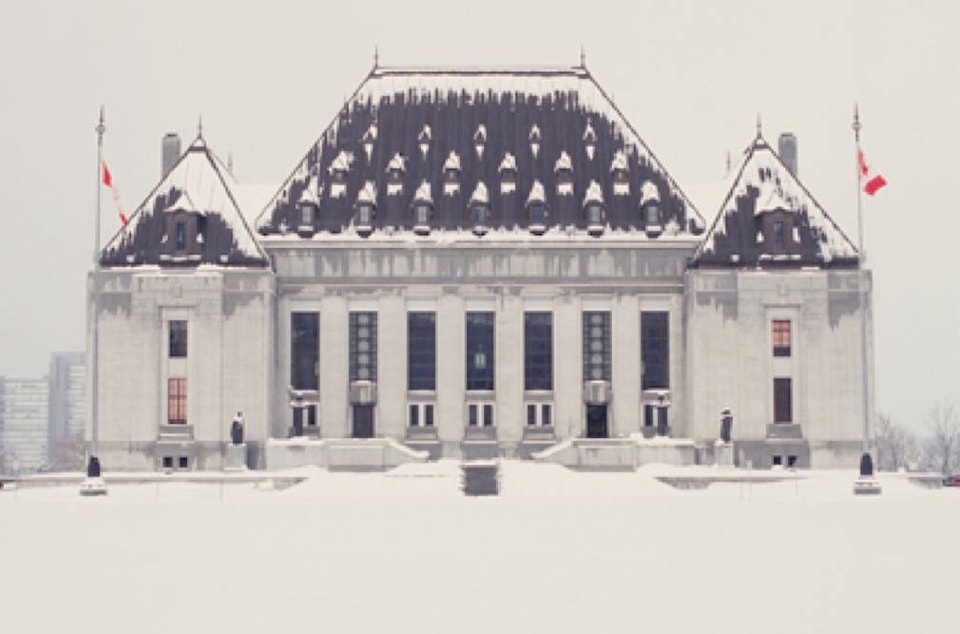A hearing was held this week in a Nelson case that has made it to the highest court in the country.
The nine judges of the Supreme Court of Canada heard arguments on March 25 from lawyers in City of Nelson v. Taryn Joy Marchi, but has not yet made a decision.
Taryn Marchi, then 28, injured her knee trying to step through a snowbank on the 300 block of Baker Street on Jan. 6, 2015. She was sent to Kootenay Lake Hospital and later transferred to ��������.
At the time, the city was working clearing the streets after a heavy snowfall.
Marchi sued the city, stating that its crews should have left openings in the snowbank to permit safe access between parked cars and the sidewalk, and that this lack of access led to her injury.
She at the B.C. Supreme Court level in Nelson, where Justice Mark McEwan said she was “the author of her own misfortune.” He said the city cannot be liable for damages if the policies that guide activities like snow clearing were created in good faith and were followed.
Marchi appealed to the B.C. Court of Appeal, which in her favour and sent the case back to the B.C. Supreme Court for a new trial because it said there were errors of fact and law in McEwan’s decision.
But there was no new trial, because the city appealed that decision – the decision to refer it back for another trial – to the next level of appeal, the Supreme Court of Canada.
The City of Nelson has never denied that Marchi was injured. The question is whether the city is to blame for the injury.
If Marchi wins it could be expensive for the city, but the case could also be precedent setting for every Canadian municipality.
“We are acting on the advice of our insurers,” Nelson’s city manager told the Nelson Star when asked in August why the city was appealing the case.
As the law stands in Canada at the moment, municipal policies are immune from liability. You can’t sue a city for a policy it has made in good faith.
But a city could be liable if the action in question was not the policy itself but how it was implemented by city workers.
The city’s written policy on snow clearing, as presented in court, gives a priority sequence for plowing and sanding on city streets. But it has no clear direction on where to put the snow when it is plowed, or whether and how to create passage for pedestrians around or across snowbanks, which could be implementation, not policy, and therefore immune from liability.
The tricky distinction between policy and implementation was one of the legal issues at play at the Supreme Court of Canada on March 25.
At the Supreme Court the judges do not hear witnesses or evidence, but review the reasons for the judgements of the lower courts, with lawyers for each side restricted to a maximum one hour verbal submission along with supporting documents. The cases are webcast on the court’s website.
The main questions the court was asked to decide included:
1. Were the city’s actions on snow clearance during that snowstorm based on written city policies, or were they an implementation of policy?
2. Even if they were policy decisions, and therefore immune from liability, there is another question: Did the city breach the appropriate standard of care expected of a municipality?
3. Were the reasons in favour of the city, given by McEwan in the original B.C. Supreme Court trial, sufficient?
Greg Allen, lawyer for the City of Nelson, the attempted distinction between policy decisions and operational decisions is ambiguous and should not apply, and that all decisions made about snow clearing that day were unique to the situation. They stemmed from the city’s policies and were therefore immune from liability, he said.
He added that even if the city was not immune from liability, it nevertheless acted reasonably and met an acceptable standard of care.
Danielle Daroux, lawyer for Marchi, the city had created a hazard by putting a snowbank between the parking stalls and the sidewalk and could have instead put the snow elsewhere, such as in one of the parking stalls or between the traffic and the parking stalls, or it could have shovelled pathways through the snowbank. Failure to do such things put the public at risk, she said.
Daroux said decisions about the snowbanks were implementation decisions because the clearing and location of snowbanks are not clearly included in the city’s snow-clearing policy, and therefore the city can be held liable.
The Attorneys General of B.C., Alberta, Ontario, and Canada all intervened in the case (intervenors are given five minutes each) to defend the concept of city policies being immune from liability.
A date for a ruling has not been announced.
Related:
•
•
•
bill.metcalfe@nelsonstar.com
Like us on and follow us on



